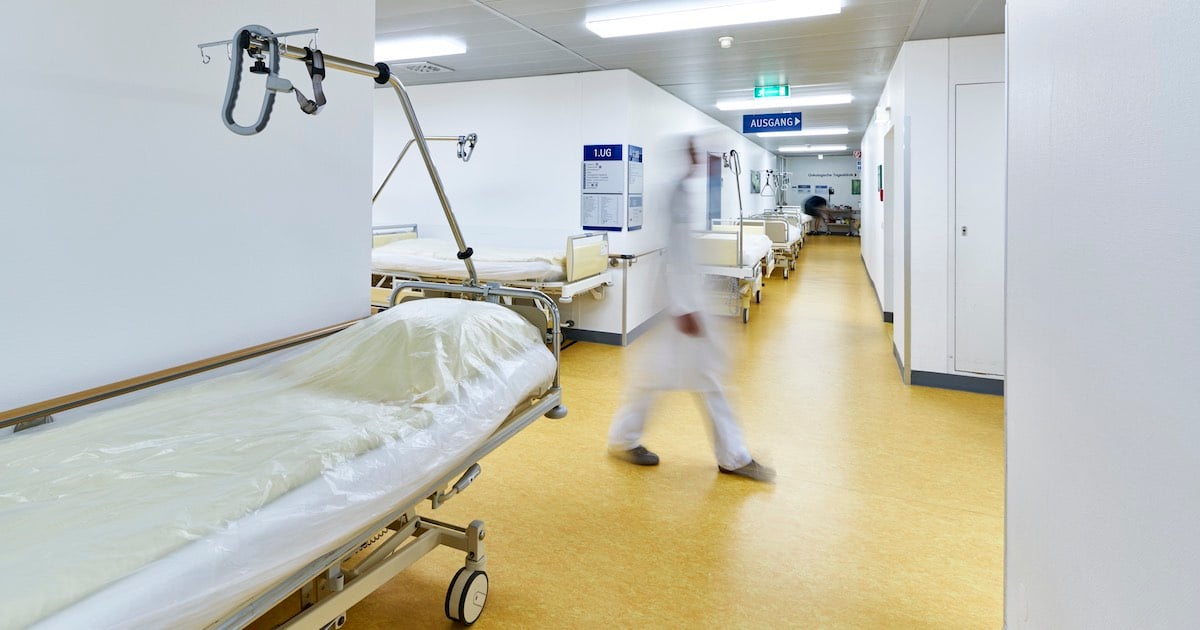Written by SmartSense | Patient Safety, Healthcare, Pharmacy
Explore solutions built for your industry
Our customer-proven solutions monitor medications and food inventories for some of the most recognizable names in the industries of healthcare, food service, and transportation, and logistics. See how our solutions adapt to your industry needs.
SEE SOLUTIONSKroger Health Strengthens Compliance Visibility with SmartSense
Watch The VideoLEARN
Questions? Call +1 (866) 806-2653 to speak to our experts.
Schedule demoQuestions? Contact us.
Call +1 (866) 806-2653 to speak with our experts or get started with a demo.
CONTACT USAbout Us
SmartSense was created to use the power of the Internet of Things (IoT) to help our customers protect the assets most critical to the success of their business.
See our storyCONNECT. PROTECT. RESULTS.
Questions? Call +1 (866) 806-2653 to speak to our experts.
Schedule demoPlease select your login
June 23, 2023
Streamline Your Healthcare Organization with IoT Sensing-as-a-Service
The global population is increasing at an astonishing rate. And with more people living longer than ever before, the prevalence of chronic diseases is also on the rise. It’s no surprise, then, that there is growing demand for designing cost-effective healthcare systems that can efficiently manage and provide a wide range of medical services while reducing overall expenses.
To achieve optimal outcomes at the lowest possible cost, operational efficiency at hospitals, clinics, and other healthcare organizations is therefore essential — especially given critical understaffing due to the ongoing labor shortage. Creating a strategy to maintain the safety of patients, products, assets, and employees is fundamental not only for meeting compliance regulations, but also for protecting the reputation of your medical staff and preventing burnout from overwork.
There’s no better place to start than with an Internet of Things (IoT) Sensing-as-a-Service solution. IoT applications are particularly beneficial to healthcare organizations because they enable secure and real-time remote monitoring to enhance the quality of patients’ lives. Beyond supporting product efficacy and asset protection, an IoT Sensing-as-a-Service framework can also empower your workforce to improve therapeutic outcomes.
Why? Because in addition to eliminating the errors and wasted time of manual compliance procedures, IoT Sensing-as-a-Service provides digital task management capabilities with automated prescriptive insights that enable healthcare employees to streamline their workflows and boost their proficiencies.
Bridging Gaps in the Labor Shortage

Amid widespread staffing shortages across the healthcare sector, the need for IoT-enabled digital transformation in hospitals and patient care facilities is palpable. For the first time since 2004, understaffing has surpassed financial volatility as the No. 1 concern among healthcare CEOs, according to the annual survey of American College of Healthcare Executives.
From canceled appointments to delayed surgeries, more than half of all U.S. patients have reported reductions in care quality due to personnel shortages. Timely health care access is especially urgent, given that more than one in five Americans skipped an annual checkup during the years of the pandemic. They’ve also had to rearrange protocols of their care, sometimes radically, which has resulted in disproportionate supply-demand ratios and access complications endemic in telemedicine.
These problems are magnified in rural areas. With an estimated 60 million people living in rural communities, access has typically been reported as the principal barrier. That’s changed since the pandemic: rural-based primary healthcare professionals have ranked quality of care as a greater concern than access to care within their practices.
“HCPs, like their patients, are most concerned about the quality of care, and we can no longer wait for old models to work,” according to John Whyte, Chief Medical Officer at WebMD. “This underscores the need for innovative solutions that look beyond the walls of the doctor’s office.”
Why IoT Sensing-as-a-Service?

Given access barriers, financial volatility, and declining quality of care, healthcare providers must take a proactive approach to “do more with less” despite staffing challenges — in other words, adopt and leverage the operational benefits of innovative digital technologies.
IoT Sensing-as-a-Service is the interconnected use of remote IoT sensing and monitoring tools with AI-powered prescriptive analytics — essentially an enhanced version of traditional IoT sensing and monitoring technology that empowers healthcare facilities to collect, analyze, and act on asset performance data to ensure product and patient safety. IoT sensors placed on medical assets and inside freezers and refrigerators where vaccines and medications are stored can perform real-time monitoring to track and trace location and confirm compliance.
IoT sensor networks are often completely wireless and don’t need to be integrated into the hospital’s IT system. Free from costly disruptions to infrastructure and easy to deploy, they can sense multiple conditions: from CO2 levels, humidity, and temperature to current consumption and noise. Furthermore, the sensors measure asset performance, automating the detection and prediction of maintenance issues that could lead to future excursions. The raw data collected by each sensor flows through a continuous feedback loop via the prescriptive analytics system, which provides actionable insights to operations teams so they can take the necessary steps to ensure all assets are fully functional.
The adoption of IoT Sensing-as-a-Service provides healthcare organizations the following benefits:
- Personalized treatment
- Improved patient outcomes
- Reduced cost of care
- Reduced human errors
- Elimination of paperwork and manual record-keeping
Streamlining Compliance, Maximizing Operations

The complexities of federal healthcare compliance will only continue to grow as more vaccines, medications, and regulations are introduced into the market. However, with IoT Sensing-as-a-Service, healthcare providers can simplify the compliance process with automated reporting and alerts.
For instance, consider the COVID-19 and Monkeypox vaccines, which must be stored in strict temperature settings to maintain their efficacy. With the right IoT sensing tools that automate environmental monitoring, employees quickly and efficiently confirm that vaccines are maintained within their optimal temperature range at all times. And without having to log that information manually, they can then shift their time to tasks that have a more direct impact on patient care.
The consequences of inefficiency can be a matter of life and death when patient care is involved. Whether it’s performing point-of-care testing and tending to ad-hoc patient needs or preparing operating rooms with the right medical devices for surgery, hospital employees are constantly moving from one task to the next with little time in between.
IoT Sensing-as-a-Service removes ambiguity from the equation by automating asset management and digitalizing task management. Consider the following real-life scenarios that occur daily within hospitals, especially those located in rural settings:
- Instead of wasting valuable time searching for a missing heart monitor that wasn’t properly stored, a physician’s assistant can identify its location within seconds using IoT’s tracking and tracing capabilities.
- A team of nurses, unexpectedly needing to transport a patient to another wing of the hospital for emergency surgery, can leverage IoT-enabled real-time visibility to find a vacant bed and avoid life-threatening delays.
- With an IoT-powered digital task management dashboard, an operations manager responsible for maintaining 30 different MRI machines no longer needs to rely on manual spreadsheets or memory to determine which machines are due for inspection.
Rite Aid: IoT Sensing-as-a-Service at Work in a National Pharmacy Chain

Rite Aid is a great example of a national pharmacy chain that leverages IoT Sensing-as-a-Service to improve compliance management through remote monitoring and automated reporting in real-time.
Rite Aid’s mission is to promote the health and wellness of their customers. To keep this promise, they need to guarantee medication efficacy by gaining continuous monitoring of vaccine storage temperatures. Rite Aid must be able to respond to temperature excursions immediately to prevent compromised medications.
Since partnering with SmartSense to deploy IoT Sensing-as-a-Service in more than 2,400 of its U.S. locations, Rite Aid has been able to:
- Reduce significantly the effort required to maintain compliance and improve documentation of proper storage temperatures
- Respond immediately and proactively to temperature excursions using real-time notifications
- Prevent temperature-related asset failures and guarantee medication viability and safety, leading to improved customer safety and reduced product loss
Signature Healthcare: IoT Sensing-as-a-Service at Work in a Leading Healthcare Provider
Signature Healthcare perfectly illustrates how a leading healthcare provider is leveraging IoT Sensing-as-a-Service to automate and improve processes for high-quality patient care while recovering from a crisis.
A healthcare system that provides primary care, specialty care, hospital care, and ancillary services for patients across 14 Massachusetts-based locations, Signature Healthcare suffered a 10-alarm fire at their Brockton, Massachusetts location. While no injuries were reported, patients and operations were displaced.
Signature Healthcare partnered with SmartSense to ensure monitoring was in place while assets were relocated. They implemented our IoT Sensing-as-a-Service framework to monitor more than 150 critical assets for compliance, safety, and efficacy. This solution has reaped many benefits for the organization:
- Automating its rigorous compliance processes through real-time critical control point visibility of temperature-sensitive vaccines, medications, and lab samples
- Simplifying the complexities of compliance with actionable, data-driven insights that help streamline workflows, reduce human error, and enhance asset protection
- Reducing the rate of costly equipment breakdowns and disruptive maintenance issues that could impact patient care
As these case studies illustrate, to meet the rising demand for quality, now is a critical time for healthcare organizations to unlock the power of IoT adoption to streamline their operations. While you can’t always control your circumstances, you can control how you react to them. For alleviating healthcare’s staffing challenges, embracing digital transformation should be step No. 1.
Other Suggested Posts
How to Improve Ambient Temperature Monitoring in Hospitals
The primary role of ambient temperature monitoring in hospitals is to create a safer environment for both patients and healthcare providers. At the core of ...
How to Ensure the Integrity of Life Sciences Supply Chains
According to an SAP survey from 2022, a majority of senior executives at enterprise businesses reported that the unprecedented supply chain disruptions caused ...
How High Reliability Organizations Evaluate IoT Vendor Security Compliance
Focusing more attention recently on patient-centered care, the U.S. healthcare sector has been motivated to establish more high reliability organizations ...
How Machine Learning Elevates Traditional Temperature Monitoring
While a minority of food companies and healthcare organizations continue to manually collect temperature logs to meet compliance regulations, most enterprises ...
How to Improve Asset Health of Medical Refrigeration
Table of Contents: What is asset health management? How to ensure the safety and potency of medical products Pros of digitalizing and automating medical ...
Subscribe to the SmartSense Blog
Stay up-to-date on the evolution of IoT connectivity.
CONNECT. PROTECT. RESULTS.
Learn how our complete critical
environment monitoring solution will help you
connect and transform your business.
Call +1 (866) 806-2653 to speak with our industry
experts or get started by
requesting a demo.